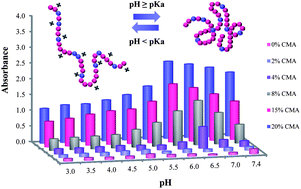Synthesis, self-assembly and stimuli responsive properties of cholesterol conjugated polymers
Abstract
Reversible addition–fragmentation chain transfer (RAFT)

* Corresponding authors
a
Australian Centre for Nanomedicine (ACN), The University of New South Wales, Sydney, NSW 2052, Australia
E-mail:
t.davis@unsw.edu.au
b Department of Chemical Engineering, Izmir Institute of Technology, Gulbahce, İzmir, Turkey
c Children's Cancer Institute Australia (CCIA), Lowy Cancer Research Centre, The University of New South Wales, Sydney, NSW 2052, Australia
Reversible addition–fragmentation chain transfer (RAFT)

 Please wait while we load your content...
Something went wrong. Try again?
Please wait while we load your content...
Something went wrong. Try again?
S. Sevimli, S. Sagnella, M. Kavallaris, V. Bulmus and T. P. Davis, Polym. Chem., 2012, 3, 2057 DOI: 10.1039/C2PY20112G
To request permission to reproduce material from this article, please go to the Copyright Clearance Center request page.
If you are an author contributing to an RSC publication, you do not need to request permission provided correct acknowledgement is given.
If you are the author of this article, you do not need to request permission to reproduce figures and diagrams provided correct acknowledgement is given. If you want to reproduce the whole article in a third-party publication (excluding your thesis/dissertation for which permission is not required) please go to the Copyright Clearance Center request page.
Read more about how to correctly acknowledge RSC content.
 Fetching data from CrossRef.
Fetching data from CrossRef.
This may take some time to load.
Loading related content
